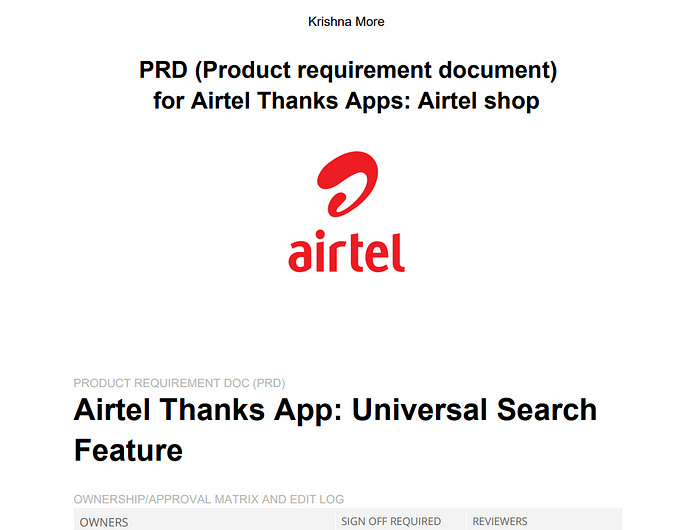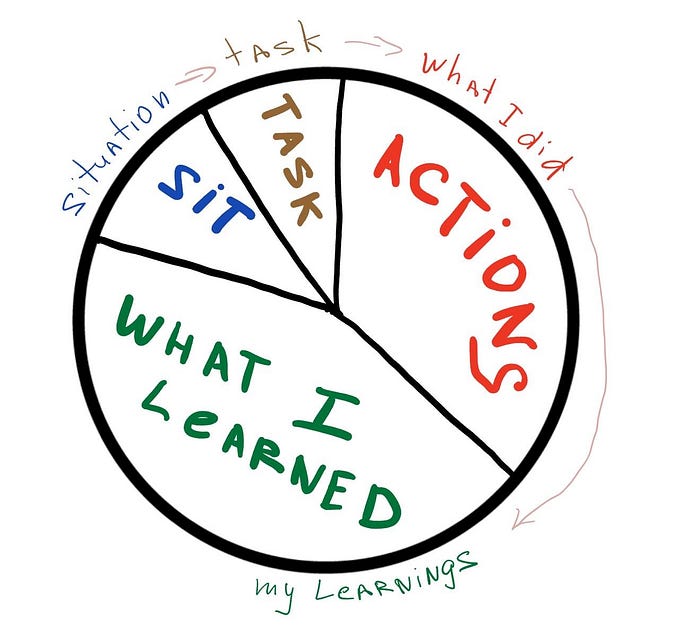A Guide to Creating an Efficient Product Requirements Document for Product Managers.

Introduction
As a product manager, one of your important responsibilities revolves around creating and communicating product requirements effectively. A crucial tool in this process is the Product Requirement Document (PRD). In this blog post, we will delve into the significance of PRDs, their key components, and provide valuable tips to help product managers create an effective PRD.
Understanding the Purpose and Importance of a PRD:
A PRD serves as a fundamental reference point for aligning stakeholders’ expectations, guiding the development team, and ensuring everyone is on the same page regarding the product’s goals and features. It helps in streamlining the product development process while minimizing misunderstandings and scope creep.
Key Components of a PRD:
a. Product Overview: Start by providing a brief summary of the product, its purpose, and its target audience.
b. Product Goals and Objectives: Clearly define the goals and objectives the product aims to achieve.
c. User Personas and Use Cases: Identify and describe the target users along with their needs, pain points, and how they will interact with the product.
d. Functional Requirements: Specify the product’s features, functionalities, and any desired integrations.
e. Non-functional Requirements: Include performance, security, scalability, and other technical aspects that the product needs to adhere to.
f. User Interface and Design Specifications: Detail the visual and experiential elements of the product, including wireframes or mockups if available.
g. Assumptions and Constraints: Capture any assumptions made during the ideation process and highlight any limitations or constraints affecting the product’s development.
h. Milestones and Timeline: Outline the key milestones, deliverables, and estimated timeline for the product’s development and release.
i. Success Metrics: Define the metrics by which the product’s success will be measured.
Tips for Creating an Effective PRD:
a. Collaborate with Stakeholders: Engage with key stakeholders throughout the PRD creation process to ensure their input and alignment with the product vision.
b. Keep it Clear and Concise: Use a structured approach, avoid jargon, and ensure the document is easily understood by diverse stakeholders.
c. Prioritize and Rationalize Requirements: Rank requirements based on their criticality, impact, and feasibility, and justify their inclusion in the PRD.
d. Provide Context and Justification: Explain the reasoning behind the inclusion of each requirement and how it aligns with the product’s goals and user needs.
e. Use Visuals for Clarity: Utilize visuals like diagrams, flowcharts, and wireframes to enhance understanding and make the document more visually appealing.
f. Iterate and Review: Review the PRD iteratively with stakeholders, incorporating their feedback and ensuring alignment throughout the development process.
Conclusion:
A well-crafted PRD empowers product managers to communicate their vision effectively, align stakeholders, and guide the development team toward building successful products. By understanding the purpose of a PRD, incorporating key components, and utilizing best practices for its creation, product managers can increase their chances of delivering a product that meets user needs, fulfills business objectives, and exceeds expectations.
Product Case Study :
Problem Statement :
Airtel recently crossed 100 Mn MAU and launched Airtel Shop on Thanks app ( install the app and check )You are the new SPM on the team, and have to write a new PRD. Focus on creating functional and non-functional requirements. Also share some ideas on what the future plans + ‘not doing’ section (out of scope) will be for this feature









